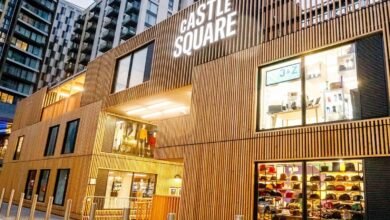
Understanding profitability and cash flow in hospitality
With the #TaxedOut campaign, we’re calling on the Government to support the hospitality industry, which is under severe strain thanks to a combination of rising costs, a VAT rate of 20%, increased National National Insurance contributions and London Living Wage, and decreased business rates relief. We’ve written an open letter to the Chancellor asking for urgent action, broken down some of London’s most popular dishes to show just how much the rising costs are decimating profits, and spoken to operators about the state of the sector.
We’ve also partnered with Gains Accountants to demystify one of the most important tools in hospitality – the profit & loss statement – and illustrate what profit averages look like across hospitality. Gains Accountants specialises in working with restaurants and cafes, with co-founder Phool Ashraf saying, “We help F&B businesses build lean, profitable, and resilient models that give owners freedom, not burnout. Our focus is on streamlining operational structure, eliminating debt, and embedding robust financial systems that boost profit and cash flow. Ultimately, our goal is to help F&B owners step back, enjoy the reward of their hard work, and build a lasting legacy through their business.”
So what is a P&L?
A P&L, or profit & loss statement, is a financial report for a business, detailing whether it’s making or losing money. It includes:
- Revenue – total income
- COGS (Cost of Goods Sold) – direct cost of producing goods or services sold
- Operating Expenses – costs not directly tied to production, like rent and salaries
- Gross Profit – revenue minus COGS
- Operating Profit (EBIT)- profit before interest and taxes
- Net Profit – profit after all expenses
What are COGS at a restaurant?
At a restaurant, the COGS are the cost of the ingredients and supplies needed to make menu items, like food and takeaway packaging, but not cooking fuel or the chef’s salary. A good average COGS for a restaurant is 30% to 35%, so anything higher should be closely monitored to protect your margins. However, items with a higher food cost might sell for more, bringing in more gross profit pounds than ones with a lower food cost.


How does profitability in F&B vary?
According to the 2025 Benchmark Report for UK Food & Beverage Businesses from Gains Accountants, this is how profitability varies in F&B:
- Average Gross Proft (GP) = 57% to 72%
- Average Operational Profit (EBITDA) = 10% to 18%
- Average Net Profit = 2% to 7%
Profitability alone doesn’t signify a financially healthy business. Good cashflow management is critical for a business to survive. In the hospitality sector, tax bills – including VAT, PAYE and Corporation Tax – present one of the biggest cashflow challenges. The Gains Accountant Benchmark Report also found that 50% of businesses don’t maintain sufficient cash reserves to cover bills due within 30 to 90 days.
“I’ve been working in the F&B and hospitality industry for more than 17 years and I believe building a hospitality business should be an opportunity for abundance, and not just a labour of love. Too many passionate owners work tirelessly without seeing the rewards they deserve,” says Phool. “Small and medium F&B businesses are the backbone of our communities but they’re taxed and treated like large, cash-rich corporations. It’s time we recognise their economic, social, and cultural impact and reward them fairly for it.”
Gains Accountants has created an F&B Profit Improvement Framework that business owners can use to optimise costs across VAT, labour and NICs. Access it below.
Source link







